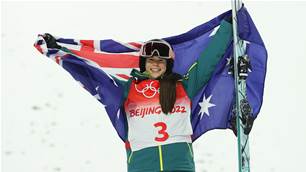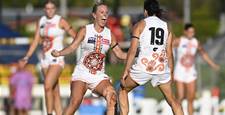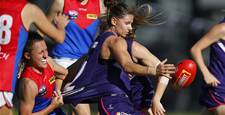The Women’s Game first Roundtable was held on May 17 in Sydney.
2. Overview of the current situation, both Under 15 and 15+ and any differences
Overall, there is a running theme throughout both groups as girls and women are less likely compared to boys and men to be part of club sports.
Young girls are more inclined of the two to participate in netball, football, basketball and Aussie Rules as some of the top team sports amongst the group.
Girls and women are just as active as boys and men but they prefer to participate in non-sport activities such as gym, pilates or dance.
The following photos are taken from the AusPlay Survey from 2015 for girls and women to see the differences between overall participation:
Photo 1: Participation of women aged 15+ overall (non-sport and sport activities)
 Photo 2: Participation of girls aged 0-14
Photo 2: Participation of girls aged 0-14
 It is interesting to note the drop off in participation for girls after 12 years of age overall. This grows again when they hit the 15-17-year-old age group. This is partly due to a 48 percent growth in non-sport related activity. In the 0-14 age group, dancing is the only non-related sport compare to 15+ with five different non-sport related activities.
It is interesting to note the drop off in participation for girls after 12 years of age overall. This grows again when they hit the 15-17-year-old age group. This is partly due to a 48 percent growth in non-sport related activity. In the 0-14 age group, dancing is the only non-related sport compare to 15+ with five different non-sport related activities.
3. Identify key objectives and targets for the future
While the conversation during the roundtable was broader than planned there are still key objectives able to be pulled out and are listed below:
- Making girls in sport feel equal and valued to the boys involved in the same sport or club. This would, in turn, make them feel like they can reach higher levels in the sport instead of turning to non-sport related activities to keep fit.
- More female coaches across sport both in the women’s and men’s game but also at a grassroots level with support for women wanting to become coaches from governing sports bodies, whether that be training days or handy tools to help.
- An increase in participation rates in organised and team sports for young girls and women but also amongst indigenous girls, those with parents who are LOTE (Languages other than English) and come from the middle-east and Northern Africa. There is a clear gap between girls and boys involved in team sport outside of school hours.
- Organise an awards event or partner on an existing one to recognise those championing women’s sport and the spirit of the game. There is also the option for a national rising star award which would focus on athletes who are not getting a lot of media coverage
- Giving niche women’s sports a platform to be heard.
- Making and creating relationships with organisation / governing bodies to help extend our reach.
The six above points do not have targets as it is unpredictable to know the way the trend will go, also if governing bodies will be able to increase participation levels and help with coaching pathways for women. However, these are the six objectives which should be targeted to achieve as a brand along with the help of others and will be discussed in further detail below.
Related Articles
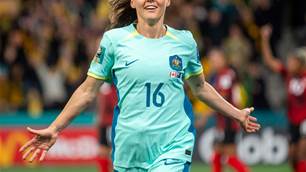
Aussies Abroad: Dub champions gutted, ribbons Raso on the move, and transfers, transfers, transfers
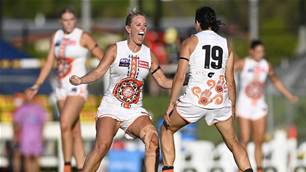
Updated: AFLW Round 2 preview and schedule
